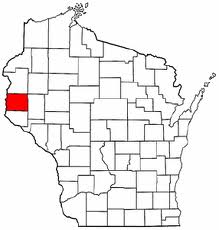 Butler Ridge Wind Farm in Dodge County
Butler Ridge Wind Farm in Dodge County
We Energies picks builders for Glacier Hills
SOURCE: The Daily Reporter
March 25, 2010
We Energies has selected The Boldt Co., Appleton; Michels Corp., Brownsville; and Edgerton Contractors Inc., Oak Creek, to build the Glacier Hills Wind Park in Columbia County. (Photo by Joe Yovino)
We Energies has selected three Wisconsin contractors to build the Glacier Hills Wind Park.
The three contractors are The Boldt Co., Appleton; Michels Corp., Brownsville; and Edgerton Contractors Inc., Oak Creek. The project to build a wind farm in Columbia County is scheduled to begin in May or June.
VISIT THE DAILY REPORTER’S PROJECT PROFILE PAGE ON THE GLACIER HILLS WIND PARK <http://dailyreporter.com/glacier-hills-wind-park/>
The project’s construction budget will be between $335 million and $413.5 million, depending on which type of turbines is used and the number of turbines in the farm, said We Energies spokesman Brian Manthey.
In April, the utility will nail down the number of turbines and their locations, he said.
SECOND FEATURE
 SOURCE: Public Service Commission
SOURCE: Public Service Commission
Docket # 1-AC-231
MEETING NOTICE
Wind Siting Council 1-AC-231
Public Service Commission of Wisconsin
Pecatonica River Conference Room (Lower Floor)
Public Service Commission Building
610 North Whitney Way, Madison, Wisconsin
Monday, March 29, 2010, beginning at 9:00 a.m.
Agenda
1) Greetings:
Overview of process and expectations, time line
Introduction of Commission staff working with Council
Open meeting requirements
Administration of Oath
2) Self-introductions by members of Wind Siting Council
3) Election of officers: Chair, Vice-Chair, and Secretary
4) Administrative:
Reimbursement of expenses
Schedule of Future Meetings
Designated substitutes
Instructions regarding use/enrolling in Electronic Regulatory Filing System (ERF)
Overview of rule-making process and additional Act 40 requirements
5) Review of Draft Rules Outline/topics
Explain how developed
Topics/items that are unclear
Topics/items not in outline which council recommends for inclusion
6) Discussion of how to proceed with future work
7) Next steps/Adjourn
This meeting is open to the public.
If you have any questions or need special accommodations, please contact Deborah Erwin at the Public Service Commission of Wisconsin by telephone at (608) 266-3905 or via e-mail at deborah.erwin@wisconsin.gov.
 NOTE FROM THE BPWI RESEARCH NERD:
NOTE FROM THE BPWI RESEARCH NERD:
Do Your Homework:
Visit the PSC docket for the siting council frequently to see the latest posts, and add comments of your own for PSC staff members to read and consider as they prepare summaries for the Commissioners.
If you want to be sure your comments are read by the commissioners themselves you'll have post your comments again during the later hearing phase so they will be considered testimony.
Visit the siting council docket by CLICKING HERE to get to the PSC website In the box that says "Link Directly to a Case", type in this docket number 1-AC-231
REQUIRED READING:
For those who are following the creation of the PSC siting guidelines, we'll be posting a series of documents and news stories for review.
Officials cover up wind farm noise report
The guidance from consultants indicated that the sound level permitted from spinning blades and gearboxes had been set so high - 43 decibels - that local people could be disturbed whenever the wind blew hard. The noise was also thought likely to disrupt sleep.
The report said the best way to protect locals was to cut the maximum permitted noise to 38 decibels, or 33 decibels if the machines created discernible "beating" noises as they spun.
It has now emerged that officials removed the warnings from the draft report in 2006 by Hayes McKenzie Partnership (HMP), the consultants. The final version made no mention of them.
It means that hundreds of turbines at wind farms in Britain have been allowed to generate much higher levels of noise, sparking protests from people living near them.
Among those affected is Jane Davis, 53, a retired National Health Service manager, who has had to abandon her home because of the noise.
It lies half a mile from the Deeping St Nicholas wind farm in south Lincolnshire whose eight turbines began operating in 2006.
"Our problems started three days after the turbines went up and they've carried on ever since. It's like having helicopters going over the top of you at times - on a bad night it's like three or four helicopters circling around," she said.
"We abandoned our home. We rent a house about five miles away - this is our fourth Christmas out of our own home. We couldn't sleep. It is torture - my GP describes it as torture. Three hours of sleep a night is torture."
The HMP report was commissioned by the business department whose responsibilities for wind power have since been taken over by Ed Miliband's Department of Energy and Climate Change (DECC).
The decision to stick with existing noise limits became official guidance for local authorities ruling on planning applications from wind farm developers.
It has also been used by ministers and officials to support the view that there was no need to revise official wind farm noise guidelines and that erecting turbines near homes posed no threat to people's health and wellbeing.
In 2007 Mike Hulme of the Den Brook Judicial Review Group, a band of residents opposing a wind turbine development close to their houses in Devon, submitted a Freedom of Information request asking to see all draft versions of the study.
Officials refused the request, claiming it was not in the public interest for them to be released. Hulme appealed to the information commissioner's office, which has ordered Miliband's department to release the documents. The drafts show the HMP originally recommended that the night-time wind turbine noise limit should be reduced from 43 decibels to 38, or 33 if they made any kind of swishing or beating noise - known as "aerodynamic modulation".
The HMP researchers had based their recommendations on evidence. They took noise measurements at houses close to three wind farms: Askam in Cumbria, Bears Down in Cornwall and Blaen Bowi in Carmarthenshire.
They found that the swish-swish signature noise of turbines was significantly greater around most wind farms than had been foreseen by the authors of the existing government guidelines, which date from 1996. They also found that the beating sound is particularly disruptive at night, when other background noise levels are lower, as it can penetrate walls.
In their draft report the HMP researchers recommended that "Consideration be given to a revision of the night-time absolute noise criterion", noting that this would fit with World Health Organisation recommendations on sleep disturbance.
However, an anonymous government official then inserted remarks attacking this idea because it would impede wind farm development. He, or she, wrote: "What will the impact of this be? Are we saying that this is the situation for all wind farms ... I think we need a sense of the scale of this and the impact."
The final report removed any suggestion of cutting the noise limits or adding any further penalty if turbines generated a beating noise - and recommended local authorities to stick to the 1996 guidelines.
Hulme said: "This demonstrates the conflict of interests in DECC, because it has the responsibility for promoting wind farm development while also having responsibility for the wind farm noise guidance policy ... meant to protect local residents."
Ron Williams, 74, a retired lecturer, lives half a mile from the Wharrels Hill wind farm in Cumbria. He has been forced to use sleeping pills since its eight turbines began operating in 2007.
"The noise we get is the gentle swish swish swish, non-stop, incessant, all night," he said. "It's like a Chinese torture. In winter, when the sun is low in the sky, it goes down behind the turbines and causes flickering shadows coming into the room.
"It's like somebody shining car headlights at your window ... on and off, on and off. It affects us all. It's terrible. Absolutely horrible."
Lynn Hancock, 45, runs a garden maintenance business. She has suffered disruption since 2007 when the 12-turbine Red Tile wind farm began operating several hundred yards from her Cambridgeshire home.
"Imagine a seven-ton lorry left running on the drive all night and that's what it's like," she said. "People describe it as like an aeroplane or a helicopter or a train that never arrives. It's like it's coming but it never gets here."
Such problems are likely to increase. Britain has 253 land-based wind farms generating 3.5 gigawatts, but this is expected to double or even triple by 2020 to help to meet targets for cutting CO2 emissions.

Want more? CLICK HERE to read Today's 'Wind Turbines in the News'
OR on the links below to read the stories at their source
3/25/10 Ice, big winds hobble wind farm
SOURCE: Nova Scotia News- The Chronicle Herald
"Extreme winds, along with cold temperatures and a buildup of ice, crashed three test towers and halted power production at RMSenergy’s wind farm in Pictou County, said company president Reuben Burge in an interview in Halifax on Wednesday.
The heavy ice conditions stopped the blades from turning, resulting in a 20 per cent loss of production in January and February, he said.
Disease and wind turbines menace bat populations
SOURCE: Orangeville Citizen, Ontario
" A University of Calgary bat mortality study, conducted between 2006 and 2008, determined that the vast majority of bats found dead below turbines near Pincher Creek, Alberta, suffered severe injuries to their respiratory systems consistent with a sudden drop in air pressure – called barotrauma – that occurred when the animals got close to turbine blades.
The study showed that 90 per cent of the bats examined after death showed signs of internal hemorrhaging consistent with barotraumas, while only about half of the bats showed any evidence of direct contact with the blades."
CLICK HERE TO READ THE WHOLE STORY